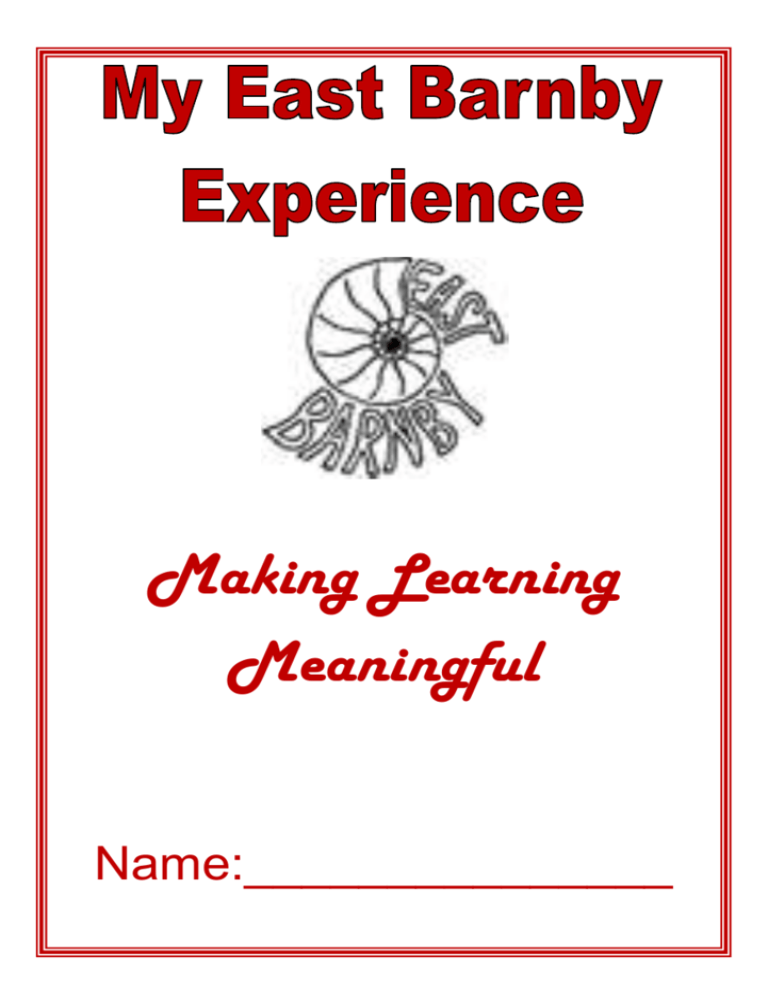- North Yorkshire Outdoor Learning Service
advertisement

Making Learning Meaningful Name:_______________ Develop your map reading skills and apply them in different environments. We use the moor, Centre grounds and the local woodlands. 1. Insert Photo Insert Photo Insert Photo Insert Photo 1. How could we tell by looking at the map that there were trees? 2. What piece of equipment can we use to show which way is North? 3. Why is it useful to find which way North is before starting the orienteering course? 4. Why did the map need a scale for us to work out where the next point is? 5. What symbol on the map showed where the next point was? 6. Why do we need a key when using a map? 7. Did you enjoy orienteering? 8. Why are maps important? 9. Who do you think may use a map and why? Design and draw a map of your school. Create your own symbols to represent the layout of the school. Use your map to guide a friend from one place in the school to another place. Set up a mini course in the school playground and ask children to find their way from one point to another using a map. Children in groups. Each group has a different route card to start with. They have to follow a map and visit each cone in order (i.e. A first, then go to B, then C, etc). On each cone is a number. Children add up the numbers they visit, then come back and tell the teacher the total (teacher has the correct answers for each route!). Using a compass ask children to try and correctly place and set up a weather vane. Spend a day exploring a local wood, incorporating environmental education, earth education, shelter building. Using Mulgrave Woods allows a study of the development of castle building. An excellent team activity involving planning, the use of different materials and the natural surroundings. Insert Photo Insert Photo Insert Photo Insert Photo 1. What animals did you see in the woodlands? 2. Why do you think those animals choose to live in that habitat? 3. What food was available in the woodlands? 4. Can you name any of the plants you saw on your walk? 5. What was your favourite part of the walk? 6. What did people from the castle use to throw at enemies? 7. What did they use to drink all the time and why? 8. How many objects did you find within the bushes? 9. Why do you think animals are camouflaged in the habitat they live in? 10. Give examples of animals that chose a habitat that they are camouflaged in. (e.g. polar bear/arctic). 11. Was your shelter you made strong? 12. What made it strong/stronger? 13. If you were to build your shelter again what would you do differently? Learn about the different habitats. Compare a habitat within the school to the woodlands area. Learn about the life cycles of animals. Learn about animal adaptation and the ‘survival of the fittest’. Learn about the food chains and food pyramids. Use pictures from the walk to create a gallery of what to expect within a woodland area. Set up a ‘find the object’ (like the one on the walk) within the classroom or in school grounds to elaborate the idea of animals being camouflaged (link in ‘survival of the fittest). Learn the history of castles and extend to why castles were there. Perhaps set up a visit to a famous castle (Alnwick castle) and compare features to the castle they saw. Explore the local seashore, combining historical, geographical and biological field studies along the world famous dinosaur coast. A study of a rock pool as a microhabitat, using investigative techniques to classify what you find. Insert Photo Insert Photo Insert Photo Insert Photo 1. What did you do on the seashore walk? 2. Did you enjoy the seashore walk? If so why and if not why? 3. Did you learn anything on the seashore walk? If so what was it? 4. Did you do anything adventurous on the seashore walk? 5. Did you enjoy the rock pooling? If so why and if not why? 6. Did you find anything when rock pooling? If so what was it? 7. Did you learn anything while rock pooling? If so what was it? 8. Overall would you do the seashore walk and rock pooling again? If so why and if not why? A challenge of varying degrees of difficulty. This can involve rock scrambling, squeezing through holes, river crossings, team challenges, personal and team challenges and more importantly a great deal of fun. Insert Photo Insert Photo Insert Photo 1. What did you enjoy most about beck scrambling? 2. Which part of the day beck scrambling did you find hardest? 3. If a friend found crossing the river very challenging what might help them? 4. Why did we need to be careful today? Why are rules important? 5. How might the river change because of the weather? 6. What animals might live in the beck we went to? 7. How clean is the water? Why might it be clean/dirty? 8. Why is water very important to us? Water cycle Children can: Produce their own diagram of the water cycle Write a story that follows the journey of a raindrop Design and create a working classroom water cycle Changing states of water Children can: investigate the different properties of ice, water and steam draw flowcharts of how water changes state Open canoeing takes place on sheltered water. This provides the perfect environment to develop paddling techniques along with teamwork and communication skills. Then attempt the full day expedition, finishing at Whitby Harbour. Insert Photo Insert Photo Insert Photo 1. What helps us to work well together? 2. Can you remember what the different parts of the boat were called? 3. What were the most important things to do when paddling? 4. Why does the boat move? 5. What causes the tide to change? 6. Many years ago harbours and ports were very important and some still are. Do you know why? 7. What features do you see at the coast? Water around the world Children can: label the different features of a river discuss the importance of rivers investigate a river from around the world through research collate the information on a poster and present to the class Floating and sinking Children can: investigate a range of materials to test whether they float or sink create an investigation to find out the best shape for a boat design a new boat and find out which is the best by testing which one will carry the most weight Take an historical tour of Whitby, combining a look at the Abbey, fishing fleet and Captain Cook and that's not even mentioning Dracula!! Insert Photo Insert Photo Insert Photo Insert Photo 1. What did you do on the Whitby town trail? 2. Did you learn anything on the Whitby town trail? If so what was it? 3. Did you enjoy the Whitby town trail? If so why and if not why? 4. What did you see on the town trail? 5. What were the important features of Whitby? Why were these features important? 6. What was the best part of the Whitby town trail and why was it the best part? 7. Overall would you do the Whitby town trail again? If so why and if not why? Using either body boards or sit on top surf boards. Enjoy the thrill of the ride. Insert Photo Insert Photo Insert Photo Insert Photo 1. What were the main rules involved when surfing? 2. How did you use the board? 3. How did you have to position your body? 4. What effect did this have on your surfing? 5. How close together should you be in the sea to other surfers? 6. What happened to your position on the beach when you had been surfing for a while? 7. Why do you think this happened? 8. What animals may you come across when surfing? 9. How do these animals differ from ones further out into the sea? Forces Investigate forces including drag and gravity to relate to our bodies when surfing Understand streamline – how does this affect cars? Cyclists? Surfers? How did you position your body to enhance your surfing skills in relation to being streamlined? Habitats in the Sea Learn which animals live in different parts of the sea – why do they live here? Understand adaptations and how animals are suited to their environments The North York Moors National Park, is an excellent venue to explore plant/animal life, man's impact on the environment. Insert Photo Insert Photo Insert Photo Insert Photo 1. What skills did we use when using a map to guide us? 2. Why are these important to know? 3. How did we work as a team? 4. For the camouflaging activity, what natural materials did you use? 5. Which materials were the best and why? 6. Why do you think we used natural materials instead of bringing along our own? 7. What overall skills did you learn to be able to survive in the wild? 8. Do you now feel you could survive for a night in the wild? Create camouflaged shelters in the playground using natural materials they find From making the hot chocolate – conduct a Science investigation on which hot drink (coffee/hot chocolate/tea) is quickest to make in relation to dissolving – which material dissolves the best? How do you know? Science- what material is the best insulator? Using mapping skills, work as a team to navigate through an obstacle course created on the playground




